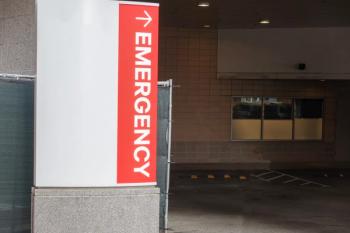
Hospitals continue to wrestle with supply chain challenges
Most executives say they continue to see issues, and shortages have delayed some procedures, analysts say. Hospitals are taking new approaches to ensure they have what they need.
Hospitals and health systems aren’t facing the dire shortages of supplies they endured during the early stages of the COVID-19 pandemic, but they continue to encounter supply chain headaches, analysts say.
Kyle MacKinnon, is senior director of operational excellence with Premier Inc., which purchases drugs and medical supplies for more than 4,300 hospitals. He says health systems are seeing some product shortages.
“I think hospitals and health systems do continue to see and experience supply chain challenges,” MacKinnon tells Chief Healthcare Executive®.
Gregg Lambert, a senior vice president of Kaufman Hall, also says supply chain difficulties continue for many health systems.
But he says they are different from the widespread shortages of masks, gowns or even crutches early in the pandemic.
“Today it seems to be much more random,” Lambert tells Chief Healthcare Executive®. “Instead of just a product category, now it’s all of a sudden, this fairly specialized product used in this procedure, isn't available.”
Shortages delay surgeries
A Kaufman Hall
While not as widespread as in the past, some shortages of drugs and medical supplies are
During the previous six months before the survey, 60% of the participants said they experienced shortages of more than 20 drugs, single-use supplies or other medical devices.
In the spring of 2023, the American Cancer Society warned that
Some hospitals and healthcare organizations are moving from the “just-in-time” model to a “just-in-case” approach to supplies, MacKinnon says. More health systems are stockpiling critical supplies to ensure that they are ready for an unexpected shortage, he says. More than half of healthcare organizations (57%) said they are raising their inventory levels, according to Kaufman Hall’s report.
In addition, more hospitals are looking at acceptable substitutes for certain drugs and products. Lambert says that’s not a new idea, but it’s gained more traction in the past couple of years.
Lambert stresses the importance of supply chain leaders working with clinicians to have their input on clinically acceptable substitutes for certain medications in the event of a shortage.
“Working with the clinicians is huge,” Lambert says. “If they're used to opening a blue box during surgery, and all of a sudden they get a red one, that should not surprise them. They should know way before, and they should have been part of that decision-making process.”
More diverse suppliers
More hospitals and health organizations are looking to find suppliers inside the United States, or sources from countries that are closer to home.
“We're seeing more near-shoring or friend-shoring,” MacKinnon says. “I think we're going to see more of that going into 2024.”
Many hospitals and health systems are looking to avoid shortages tied to disruptions across the globe. In 2022,
MacKinnon says it’s not realistic to expect to avoid using supplies produced in Asia.
“I do think there's still going to be a portion that is going to be in China or is going to be in Malaysia or Indonesia or some of these other low-cost manufacturing countries,” he says. “I think that's inevitable.”
But he says more hospitals are looking at geographical diversification, and ensuring they have options for some supplies from domestic suppliers or others closer to the U.S.
Increasingly, hospitals are also employing different approaches to dealing with suppliers. In the past, organizations may have relied on one or two suppliers, in order to get better deals on pricing as preferred customers.
Now, some hospitals are branching out to a bigger number of suppliers, even if it means they have to absorb some higher costs.
“Providers and the industry are willing to pay a little bit more just to have that redundancy, where it makes sense,” MacKinnon says.
He says it’s a big calculation, depending on the mix of products and the anticipated availability. But increasingly, he says hospitals in some markers are willing to pay more for the extra assurance of supplies and the need for a “diversified portfolio,” as MacKinnon says.
“I think we're still going to see more of that in 2024 as well,” he says.
Thinking strategically
Hospitals are heeding some lessons in the pandemic, but analysts say some organizations can do more to ensure they have adequate supplies of the drugs, devices and gear that they need. Hospitals must look at their supply chain management as part of broader strategies to manage costs.
Lambert says that supply chain departments shouldn’t be thought of as “the department that brings me my stuff.”
“It should be more of a strategic function,” he says. “They should be at the table.”
Some hospitals are showing a greater appreciation for supply chain leaders, Lambert says. Some organizations, particularly larger systems, are bringing supply chain leaders into the C-suite and elevating those leaders to posts as vice presidents.
“There’s much more of a realization that the supply chain can bring significant value to the organization in terms of product availability,” he says.
Smaller hospitals and systems can also consider partnering with other small hospitals in their region on buying supplies, which would give them greater purchasing power, Lambert suggests.
“The smaller organizations that don't have the clout, so to speak, in terms of name and purchasing volume, can make a good run and gain that by partnering with similar smaller organizations,” he says.
Hospitals also are working to do a better job of analyzing their supply chain data to gain more insights, and analysts say that’s an area of increasing importance.
MacKinnon says he’s seeing more collaboration between clinicians and supply chain leaders, and top healthcare executives are more informed about supply issues.
MacKinnon says the industry needs more data on supplies coming from other countries.
“I think there are still challenges in end-to-end supply chain visibility,” MacKinnon says. “I don't think that healthcare has that down yet.”
He sees the need for more insights into the volume of supplies that could be affected by potential disruptions, such as ships in the Red Sea being attacked by Houthi militants. Major shipping lines have rerouted some of their ships, which could have an impact on supplies.
“I don't think that we have a good understanding of where everything is at a given time, and I think that'll continue to be a priority going forward for us,” MacKinnon says.
MacKinnon sees high potential for the use of artificial intelligence to assist supply chain operations.
“Whether that's streamlining tasks and workflows, I think that can all be applied to this concept of managing and mitigating supply shortages in 2024,” he says. “So I'm personally excited about that one.”
Conversely, MacKinnon says cybersecurity is a threat that causes sleepless nights.
“Providers are experiencing a range of threats and so are some of our major suppliers,” he says.
Read more:






















































































